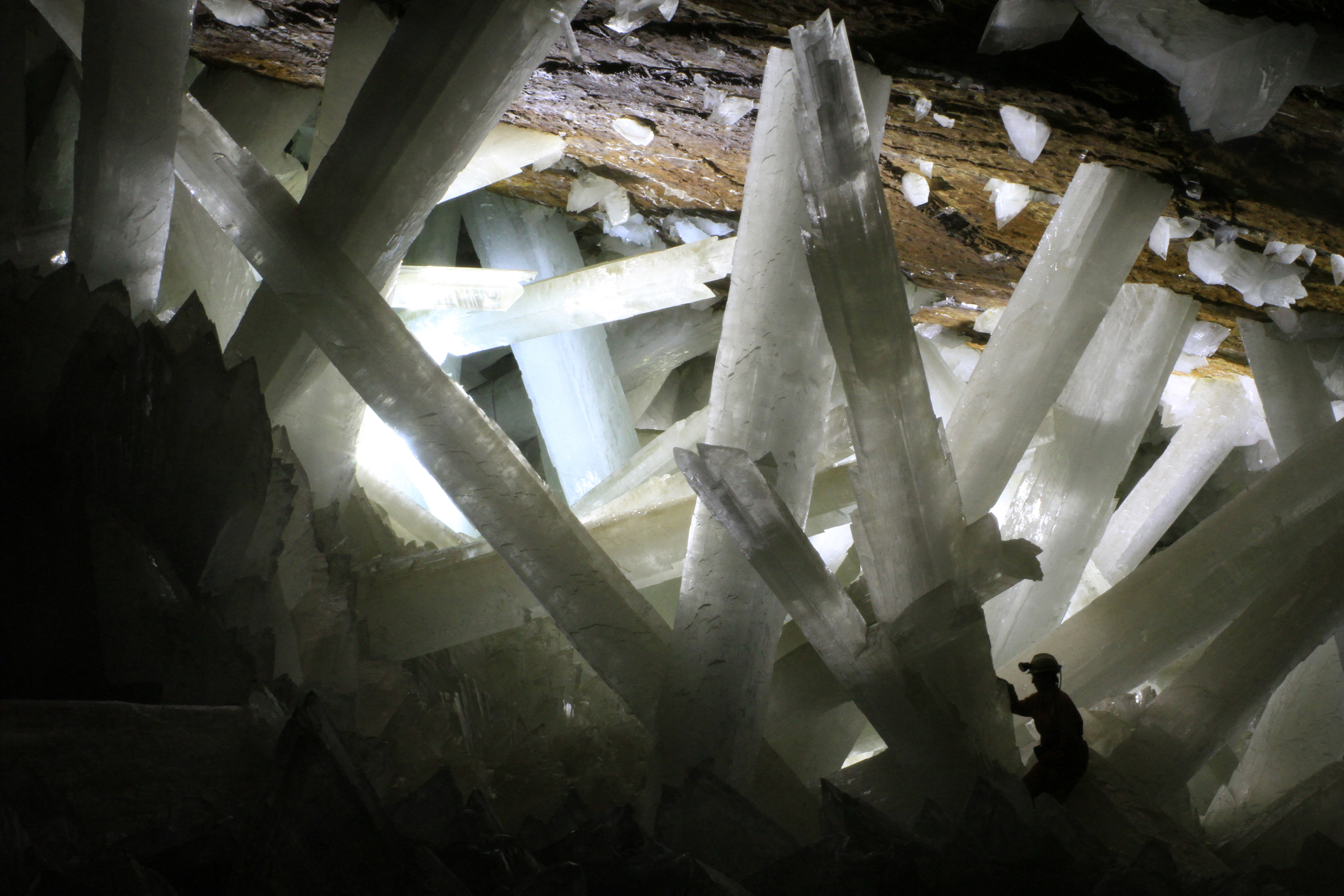Discovered in the year 2000, the Cave of Crystals sits some 300 meters (984 feet) below the surface of the Sierra de Naica Mountain in Chihuahua, Mexico. Home to some of the largest known crystals on the planet, this vast, otherworldly cavern is both beautiful and deadly.
Occupying a U-shaped cavern in the depths of the mountain, the Cave of Crystals measures 30 meters by 10 meters (98 by 33 feet) and is covered top to bottom in enormous cloudy-white selenite gypsum crystals. The tallest of the cave’s crystals, one of the largest in the world, weighs a whopping 12 tonnes (13.2 tons) and stands 1 meter (3.2 feet) wide and 11.4 meters (37.4 feet) tall – that’s six times the height of a human!

Conditions in the cavern
While its picturesque interior may look like the perfect photo-op, the Cave of Crystals is closed to the public as the conditions inside are both treacherous and potentially deadly.
With a stable interior temperature of around 58 degrees Celsius (136 degrees Fahrenheit), and humidity levels that reach between 90 and 99 percent, spending any longer than 10 minutes in the cavern unprotected could lead to a build-up of fluid in the lungs and even death.
To withstand the conditions inside the cave, teams researching the crystals must dress in heat-protective suits with breathing apparatus supplying them with fresh air. This enables the exploration time to be extended from around 10 minutes to between 15 and 60 minutes.
Even with protective equipment, the incredibly smooth and condensation-covered surfaces of the crystals prove hazardous to those attempting to traverse the interior. The crystals, some of which weigh over 50 metric tons, are made from gypsum, a soft mineral with a Mohs scale of hardiness score of just 2 – that’s only one level above the scale’s softest mineral. This means the crystals are likely to break and move under the pressure of foot traffic.
Crystal formation
The mountain, which contains a number of giant gypsum crystal caves, formed roughly 26 million years ago from a mound of magma straining against the Earth’s surface, forming a mound. The caverns in the mountain filled with hot, calcium sulfate-rich waters that in turn allowed the growth of the crystals.
While calcium sulfate can form several different minerals, the dominant mineral in the mountain’s cave system is a transparent variety of gypsum called selenite.
Anhydrite, a mineral that forms in the presence of acid sulfide water and calcium ions, was also abundant in the hot cave waters. Shortly after the formation of the mountain, when the waters were at their hottest, anhydrite deposits formed.
As the water’s temperature dropped, the conditions fell below anhydrite’s high stability zone, dissolving the mineral. Gypsum crystals began to form when the temperature of the cave’s water reached around 58°C (136°F), and the slowly dissolving anhydrite deposits infused the water with just enough calcium and sulfate to sustain gypsum crystal growth.
A neighboring chamber just 120 meters (394 feet) down, called the Cave of Swords, experienced a faster drop in temperature than the Cave of Crystals. This caused many smaller gypsum crystals to form inside the caves, while the slow cooling of the water in the Cave of Crystals allowed fewer crystals to grow to much larger sizes.
Research has been conducted to try and determine the exact reason these crystals specifically have been able to grow to such impressive sizes, but it’s thought that their continued submersion beneath the mineral-rich waters has allowed these giants to continue growing for an estimated 500,000 to a million years.
In 2017, a team of NASA microbiologists researching the cave discovered microbes trapped in fluid inclusions within the crystals. Having been removed and successfully revived in the lab, they estimated these microbes to be around 50,000 years old and suspected they had been living off the crystals’ manganese and iron deposits.
Mining activity
The mountain surrounding the cave systems is rich in lead, zinc, and silver, making it a hotbed for mining activity. While the Cave of Crystals was discovered just 23 years ago, the much shallower Cave of Swords was first stumbled upon by miners in 1910 and was subsequently pillaged for the next 100 years.
To gain access to these cave systems the miners first had to remove the mineral-rich waters that filled each cavern. Creating an artificial lake near the town of Naica, mining companies pumped the equivalent of an Olympic-sized swimming pool out of the caves every 40 minutes.
Despite granting access to miners and researchers studying the caves, the removal of the water also jeopardized the integrity of these giant crystals as the lack of buoyancy threatened to collapse some of the larger structures under their own weight.
The removal of the water also halted the formation and growing process of the gypsum crystals. Mining in the mountain was stopped in 2015 and the caverns were allowed to gradually fill once more with water.
While the water level continues to rise, it hasn’t yet reached the Cave of Crystals, and it’s unknown if the waterbed will ever return to the level it once was. The hope, however, is that the waters will one day reach the crystal-filled caves and aid in the growth and repair of some of the largest crystals in the world.
Source Link: The Cave In Mexico Where Crystals Grow To Six Times The Size Of A Human